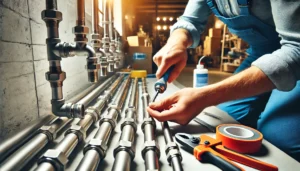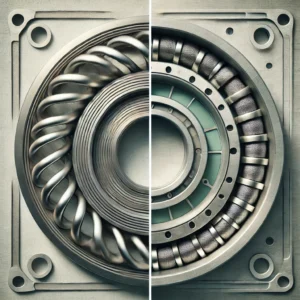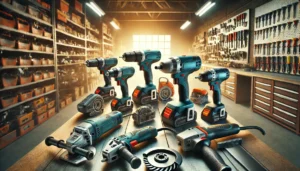1. Material Compatibility
- Critical Consideration: Ensuring that proper material is selected for pipe fittings is critical. It is essential that the material is compatible with the medium being conveyed, otherwise reactions, corrosion or degradation will take place.
- Examples:
- PVC and PEX are widely chosen for water due to their corrosion resistance.
- Stainless steel, known for its strength and corrosion resistance, is ideal for a wide range of applications, including gases and high-pressure scenarios.
- Brass and copper are often selected for heating systems because of their excellent thermal conductivity.
2. Pressure Ratings
- Importance of Pressure Management: Fittings should be able to bear a working pressure for the system that is reasonable. A difference in pressure ratings can cause issues like system breakdowns or leaks.
- High-Pressure Systems: For other systems such as hydraulic circuits or gas pipelines, those need to have fittings with greater pressure ratings for both safety and operational efficacy.
3. Temperature and Chemical Compatibility
- Thermal Considerations: The system’s operating temperature should be defined. Some materials expand or become brittle at high or low temperatures.
- Chemical Interactions: Verify the fitting material does not circulate and thus chemically react with the constituents being transported. Such situations appear in the chemical processing industries.
4. Flow Requirements
- Understanding Flow Dynamics: Corrosive fluids, particulates and other fluids, as well as the system’s general flow rate are of concern. The fitting in question should adapt to the system’s flow characteristics. Be it laminar or turbulent flow, or the viscosity. Therefore, the characteristics have to be taken into deep consideration.
- Selection Criteria: Preferably smooth interior surfaces in both viscous and high-flow systems.
5. Durability and Maintenance Needs
- Longevity Considerations: As far as maintenance is concerned, some materials require less and thus extend life and require less maintenance. This is often a key consideration for fitting choice especially when the context is remote locations and critical areas.
- Maintenance Ease: Look for maintenance hinges that allow for easy inspection or maintenance to minimize system shutdown time.
6. Environmental Conditions
- External factors: The environmental conditions like humidity, exposure to UV light, and temperature affects the operational capacity and durability of fitting pipes.
- Appropriate Selection: In the case of outdoor applications, PVC materials that are UV resistant may be essential.
7. Industry Standards and Certifications
- Compliance with Regulations: Make sure there are no missing gaps as to whether the fittings have certain industry applicable standards or certifications. This is important for safe measures, quality assurance, and compliance with laws.
- Examples: Citing NSF certification for potable water, ASTM for material standards, API pertaining to oil and gas industries.
Customization
- Addressing Specific Needs: More advanced systems may use fittings that are not standard. Special tailored pipe fittings can be made to suit specific design features such as unusual angles, sizes, and even pressure conditions.
- Advantages: Such fittings enable better performance by reducing the number of connections and boosting the safety as well as the overall efficiency of the system.
Installation and Maintenance Tips
- Follow Manufacturer Instructions: The instructions given by the manufacturer of the fitting should be followed to the dot.
- Stick to the right equipment: Use the correct tools as this will prevent damaging the fittings when installing them.
- Ensure Cleanliness: Fittings and pipes need an extra level of cleanliness to ensure no contamination occurs that would interfere with sealing.
- Tighten Securely: All connections must be tight to avoid leaks, but over-tightening can lead to severe damage.
Advanced Maintenance Advice for Industrial Pipe Fittings
1. Regular Inspection
- Technical Approach: Specialized diagnostic equipment such as ultrasonic testing and x-ray fluorescence (XRF) may be employed for revealing externally concealed internal defects or internal fitting flaws.
- Focus Areas: Do not forget to focus on stress corrosion, thermal fatigue, and erosion.
2. Proper Cleaning
- Cleaning Agents: Refrain from using abrasives and appropriate solvents that threaten material integrity. For example, stainless steel fittings should not be cleaned with chlorine-containing cleaning agents.
- Material-Specific Protocols: Apply cleaning protocols based on material types. For example, passivation may be done on stainless steel to remove surface contaminants and enhance corrosion resistance.
3. Maintenance Schedule
- System Based Scheduling: Prioritize maintenance schedule based on system operation intensity. Constant high-pressure systems or those experiencing temperature cycling should be more frequently inspected and maintained.
- Predictive Maintenance: Use sensor data to strategically preemptively replace fittings based on predicted failure rather than waiting for actual failure to enhance overall system efficiency.
4. Avoiding Unnecessary Strain
- Stress Analysis: Perform periodic stress analysis with emphasis on stress concentration on fittings with tools such as finite element analysis (FEA).
- System Optimization: Change the arrangement of fittings or add brackets as required in order to ease the loading on the fittings.
5. Lubricants and Gaskets
- Appropriate Lubricants: For trouble-free operation, the lubricant should be non-reactive with the fitting material and the medium being transported. This prevents galling in threaded fittings as well.
- Seal Integrity: Seals and gaskets must be changed periodically to check for leaks, particularly in systems with corrosive or hazardous fluids.
FAQs
1. What materials last longest for pipe fittings?
- Answer: For a number of applications, stainless steel and copper are considered particularly durable. For plumbing applications, PVC and PEX are excellent due to their non-corrosive nature.
2. Can I use different materials together like PVC and metal pipes?
- Answer: It is generally not advisable due to differential thermal expansion and physical reactivity. It is best to use purpose-built adapters designed for different types of materials.
3. How often should I replace pipe fittings?
- Answer: This is determined primarily by the material composition and the manner of use. Regular checks will inform the user of the right time for replacement.
4. Do tailor-made fittings come at a higher price?
- Answer: Yes, they are potentially more costly upfront. However, because they are made specifically for your system, they may require less maintenance and repairs, ultimately saving you money over time.
5. Why do pipe fittings require the correct material?
- Answer: The correct material maintains system integrity, functionality, and safety. Choosing the wrong material increases the risk of rapid system breakdown and creates safety hazards.
Conclusion
Wrapping It Up: Your Go-To Guide for Pipe Fittings
And there you have it! The expedition of discovering the eccentric world of pipe fittings; learning about elbows, nipples, tees, and so on. Remember, the right fitting is not merely about the dimensions, but also the best material, pressure ratings, and every other detail that needs to be accounted for in order for your systems to function both safely and efficiently.
But hold on, there is more. Proper installation and consistent maintenance are the unsung heroes of pipe fittings because these practices increase the lifespan and reliability of the systems, outsmarting all expectations.
Get ready for our next blog, where we go even deeper. You are going to learn even more insider tips and tricks, some untold industry secrets, and answer questions that you really want to be solved. It’s time to stay alert, as you really don’t want to miss what is coming next in the captivating world of industrial fittings.









